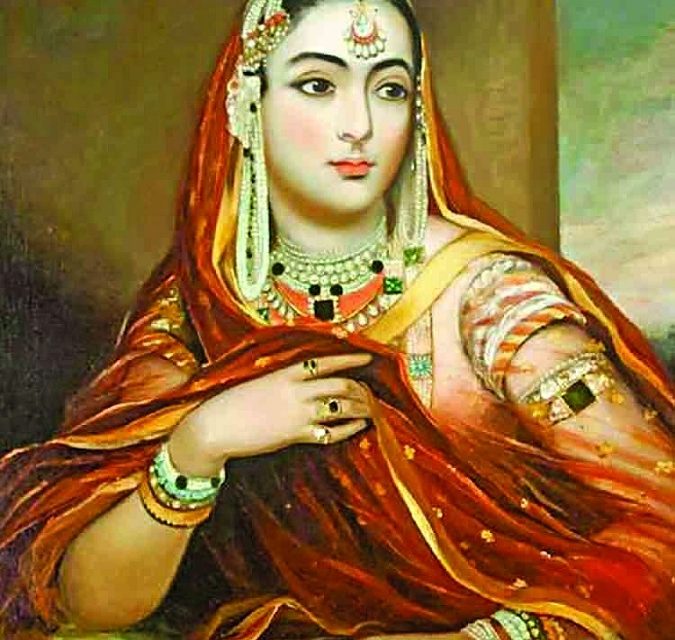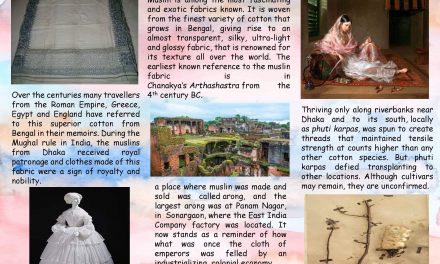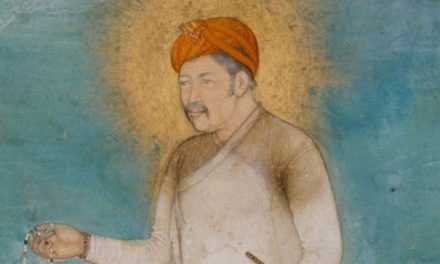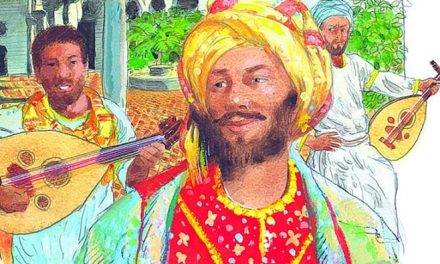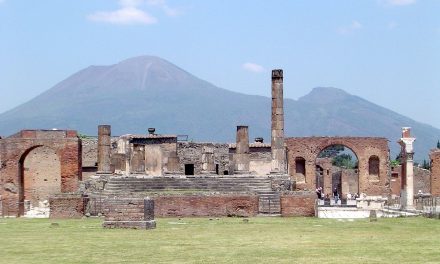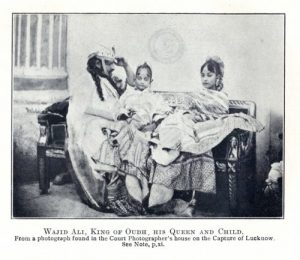
Image Source: Google
Queen Malika Kishwar was the mother of King Wajid Ali Shah, the last king of Oudh which was a princely state in the Oudh region of North India. Even though the queen never left the royal palaces of Lucknow, her grave now rests at the famous Père Lachaise cemetery in Paris. It lies unmarked and unrecognisable amongst several famous graves even though her feat of bravery and courage was something to look up to.
Queen Malika Kishwar, also known as Janab-i-Aliyyah meaning “Her Sublime Excellency”, was born in 1803. She was married to the 10th Nawab of Oudh, Amjad Ali Shah, and they had four children, one of whom was Wajid Ali Shah. Due to her husband passing away due to cancer in 1847, she became a widow at the age of 45.
Nawab Wajad Ali Shah came to rule Oudh on 14th February, 1847, after the death of his father. Several kingdoms rose after the eventual fall of the Mughal Empire in the 1800s, Oudh being one of those kingdoms. Oudh had little power and influence due to the successive treaties signed by the nawabs with the British East India company, but the nawabs still ruled from the Lucknow court with great magnificence and splendour.
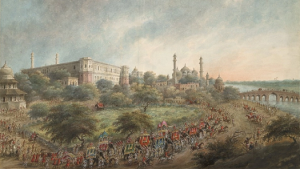
A view of Lucknow under the Nawabs. Image Source: Google
But, sadly, this reached an end after Nawab Wajid Ali Shah was tricked by the expansionist policies of the Governor of British India, Dalhousie. On 11th February, 1856, claiming Oudh was being mishandled by Nawab Wajid Ali Shah, the kingdom was annexed to the British Empire.
Nawab Wajid Ali Shah had refused to sign the annexation treaty and decided to leave Lucknow, as he didn’t have enough men to oppose the treaty with war. He, instead, decided to leave for England to visit Queen Victoria and get his kingdom back fairly through diplomacy and dialogue. With 500 men, he left Lucknow and landed in Kolkata where, unfortunately, he fell sick because of the long river journey. This led to him having to withdraw his mission and eventually a decision was made that his mother, brother and son would continue the journey instead of him.
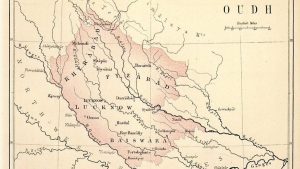
Image Source: Google
These events are also recorded in British author and Lucknow historian, Rosie Llewellyn Jones’ book “The Last King in India”, where she also writes about how Malika Kishwar always kept herself updated on political events and developments and had immediately reached out to British resident James Outram after hearing about the annexation. They had met but by then it was too late because the King had already taken action.
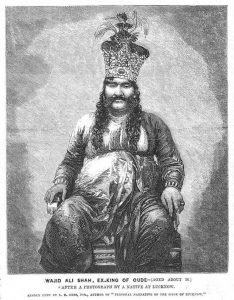
Image Source: Google
They planned to travel to Suez from where they would travel on land to Alexandria and then via water to Southampton. On board the SS Bengal, they left Kolkata for Suez on 15th June, but while trying to empty the ship, a box containing jewels worth 50,000 pounds for the Queen fell into the sea. But the group continued their journey, despite the minor hiccup, to Southampton via the SS Indus on 21st August, 1856. Further details like these of Malika Kishwar’s visit to England were highlighted in another book by Rosie Llewellyn Jones, “True Tales of Old Lucknow”.
The Queen had along with her nine maids, 110 attendants, many soldiers, and seven eunuchs. Their large number and cultural appearance created a buzz throughout Southampton, going as far as being on the popular newspapers at that time. They stayed at the Royal York Hotel for 10 days for a grand total of 100 pounds.
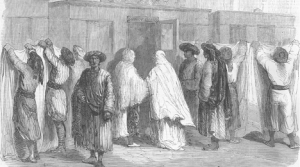
Malika Kishwar boarding the train at Southampton. Wiki Commons
At the end of August, they had to travel on a train but they were faced with an issue. Malika Kishwar was in strict purdah and she had to get off her carriage and into the train without other people seeing her. They tried to convince the station master to close the station to the general public but he didn’t comply. So, the servants formed a covered passageway for her, holding up calico sheets between the train and the carriage, and the Queen was able to board the train.
For the next 13 months, the party stayed at a house just off London’s Marylebone Road. During their stay, the Queen was always followed by the paparazzi, the press taking a keen interest in her way of living in purdah and having so many people accompany her at all times. This caused her much discomfort but her agents only used this attention to create sympathy for her son’s situation.
It was taking longer than expected to arrange the meeting as they were faced with lots of administrative problems and the hassles of making a royal appointment. Moreover, their request was denied for being shown at the parliament in a wrongful manner. They had to conduct a lot of back-door negotiations to make the meeting come to life and that cost them a hefty amount of money.
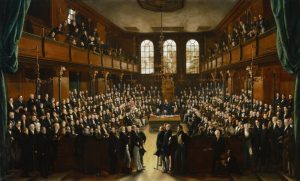
Image Source: Google
On the 4th of July, 1857, Malika Kishwar finally met Queen Victoria at Buckingham Palace. The encounter is recorded in the Queen’s daily journal.
“After luncheon received the Queen of Oudh. Much trouble in arranging that no man should look at her… She threw back her veil and kissed my hand, which the (her) grandson also did… She was much weighed down by her heavy dress, her crown and jewels, being very small… A few words were exchanged, when the Queen and I were seated… We then retired but missed the interesting site of her departure in state…”
Meanwhile, in Oudh, the Great Uprising was occurring and being led by none other than King Wajid Ali Shah’s wife, Begum Hazrat Mahal. This caused the King to be denounced as a traitor and put under arrest. This meant that the British government couldn’t do anything further to help Oudh and thus the Queen had to return home.
The Queen wanted to return to Kolkata via Mecca but her wishes of a pilgrimage were denied and she was told to get a new passport as a British citizen as the existence of Oudh was no more. It was said to be a cunning plan to get the royal family to finally accept the annexation, but the Queen refused. She was assisted by the French and told that she could travel to Mecca from France.

Image Source: Google
They landed in Paris on 24th January and a day after, Queen Malika Kishwar passed away. Soon after, her son and granddaughter who accompanied her in her journey passed away as well. They were buried in the then newly created Muslim quarter at Père Lachaise.
In 1884, Prèfet de la Seine, Eugene Poubelle had written to the British ambassador in Paris about the little to no maintenance of the graves. This was passed to King Wajid Ali Shah, but by then he was barely getting by himself and couldn’t take any measures for the well-keeping of the graves. The graves lay unmarked and unkempt, just like all of the millions of others. It took a long time for rare history enthusiasts to find the grave until a few years ago when the Queen’s fifth descendant, Aman Khan, visited the grave during Shab-e-Barat. It took him two days to find it.
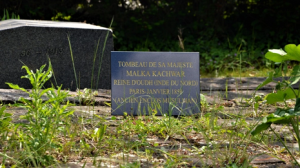
Image Source: Google
What Queen Malika Kishwar did may seem nothing out of the ordinary now, but back in her times when women were viewed as so little, it was an amazing act of love and boldness. She went from being captive in the walls of the palace to travelling across oceans to England and then Paris and she did all of this just to seek justice for her son. Not many people know her story but she remains a hero and inspiration to the ones who do.
Source: An article by Madhuri Katti
https://dailyasianage.com/news/206071/forgotten-queen-of-oudh–malika-kishwar?fbclid=IwAR2uqzpFIoDPJhUnJ6AbRM9eijaq5YRjjKVOChws2VXOk4Z4cLDJ2R6zlSg

